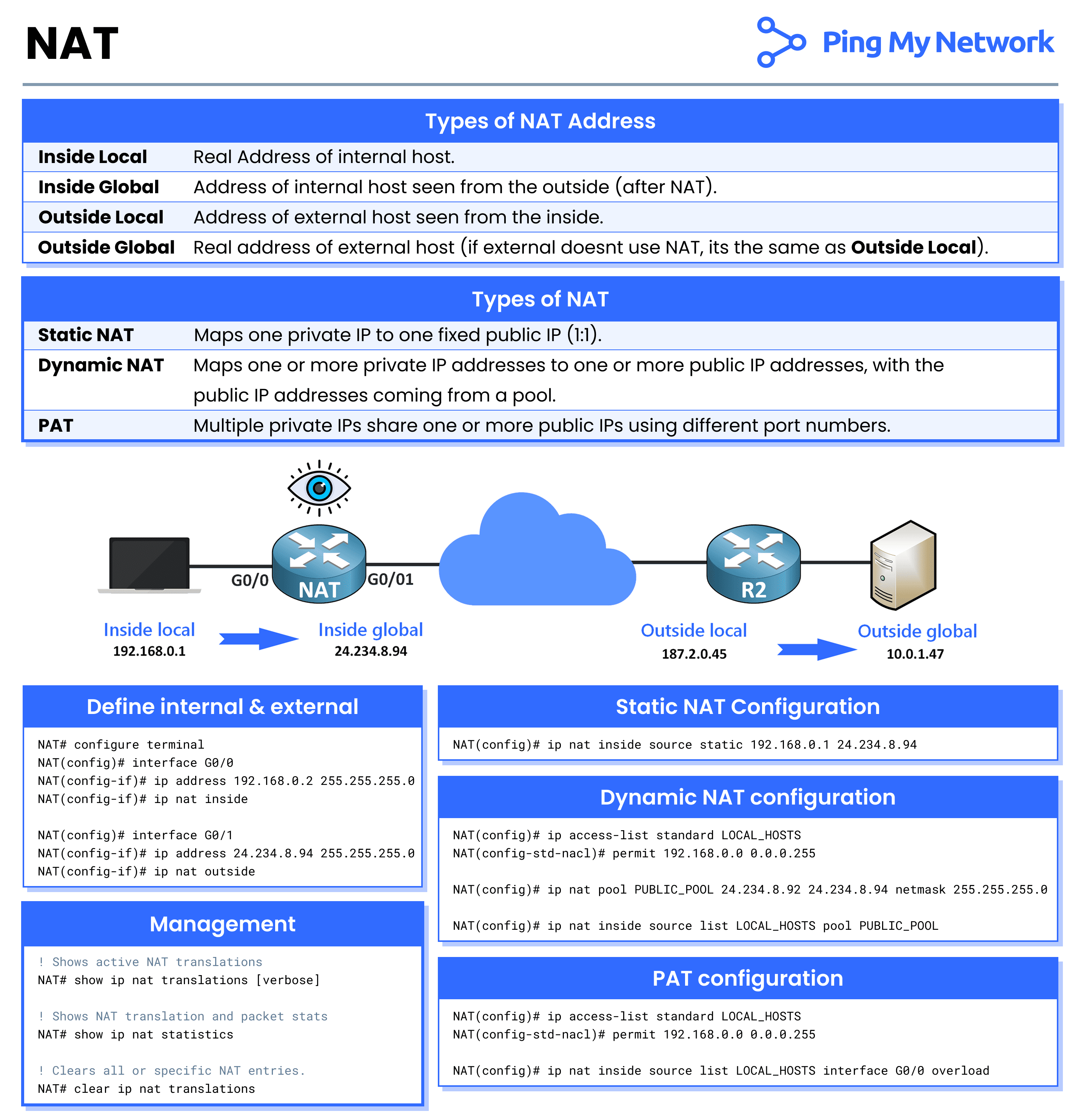Before exploring the visual guide, review these related lessons:
This NAT CheatSheet illustrates how address translation operates in Cisco networks. It summarizes the four NAT address types: Inside Local, Inside Global, Outside Local, and Outside Global. Each shows how an IP address appears from different perspectives inside and outside the network.
The visual also includes quick configuration examples for Static NAT, Dynamic NAT, and PAT to help you connect the theory with real-world practice.

Figure 1 - NAT CheatSheet for CCNA Learners
In real network environments, NAT is essential for conserving IPv4 space and protecting internal addressing. It hides private IPs from the Internet while maintaining full access to external services.
For your CCNA exam, remember:
Static NAT provides a one-to-one mapping.
Dynamic NAT allocates public IPs from a pool.
NAT Overload (PAT) allows multiple hosts to share one public IP through port translation.
Once you’re comfortable with these translations, continue with related lessons like VLANs, ACLs, and routing fundamentals to strengthen your network knowledge.
Answer the question below
NAT CheatSheet
Network Address Translation (NAT) allows private networks to reach public networks by translating IP addresses. It’s a key CCNA topic for managing IPv4 communication and routing.